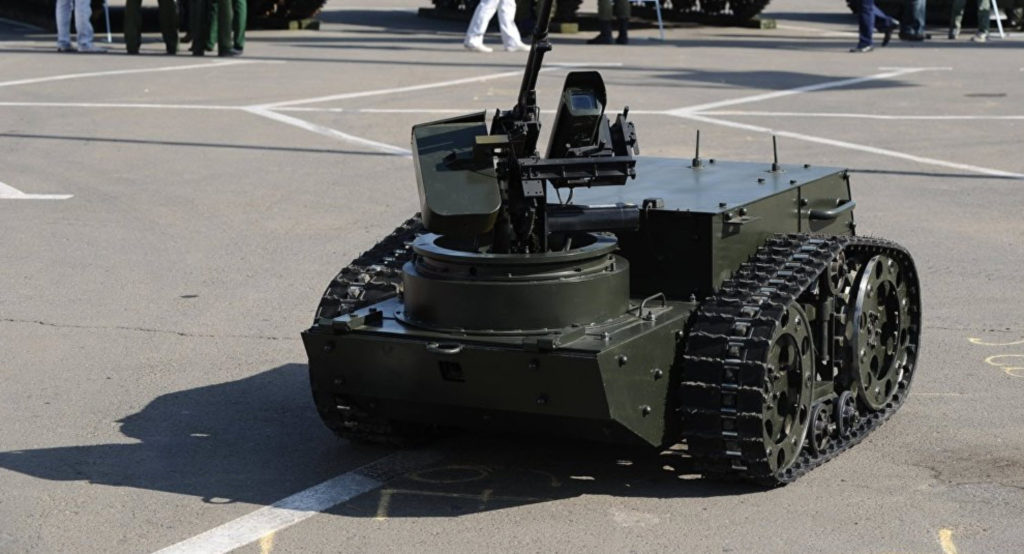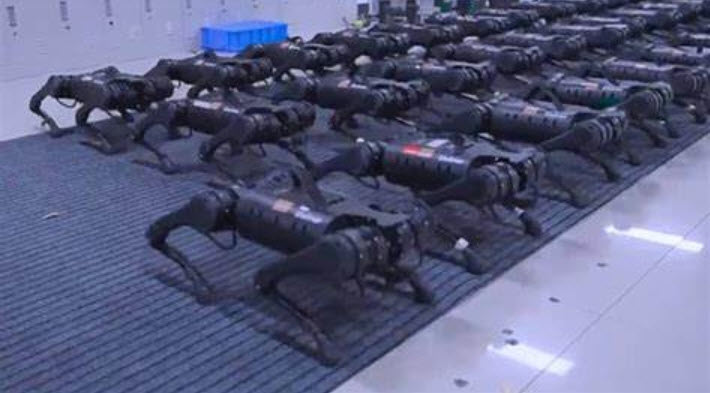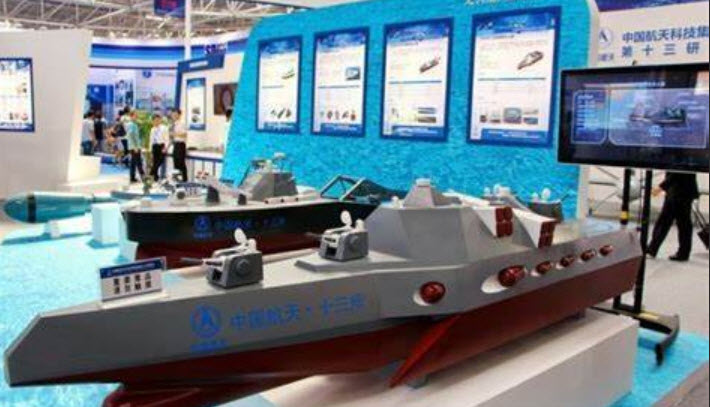China has been exploding with all sorts of new things, products and innovations. Most of which has yet to catch on in the West. There are many reasons for that, but the biggest one is regulation. People who possess new things; new products; new ideas, must get permission to use them. And in the West (especially inside America) this takes time.
For instance, in the 1990’s I was the Principal Engineer for a company that was leading the world in LED technology for automobiles. We were working on tail-lights, head-lights, and courtesy lights. We were pretty cutting edge for the time. And our products were great, and worked well.
The thing was that they could not be used in cars or trucks because the regulations that existed defined the characteristics of the lighting mechanism itself – an incandescent bulb, and not the end result; the ability to have a lighted area at a specific distance.
So in order to put our new, cheap and reliable system on the market we need to get around this “roadblock”. We had to petition to change the regulations to accept results-based measurement criteria as opposed to design-based measurement criteria. And when we started to do that, boy oh boy, did we “open up a can of worms”.
No one was happy.
It’s a long story and maybe I’ll get into it some other time. Anyways, LED technology did eventually enter the automobile market, and today it’s actually rare to see incandescent bulbs being used with the same kind of commonality that used to exist.
You must understand. Over the many years, the evil and corrupt, have corrupted business, technology and society and bent them to do THEIR bidding. And it was fine and well when no one noticed what was going on…
…and China has shown the way. Where big and small, everyone can live their lives and make, grow and innovate free of government interference’s. And while it is all possible that RAH! RAH! American exceptionalism will shine through…
…the fact is that it won’t.
Not until all those millions and millions of tiny little hands are out of your wallet. Sure, you can allocate 500 million dollars to a new hospital system. And you know what you will get? A bunch of reports “evaluating” the various studies on building the hospital system. You will not get a hospital.
All these little hands are put in place by decades of crime and corruption by the oligarchy. And they are not going away.
What am I talking about?
I’m talking about this…

Yeah. You can buy a complete box of 20 for under $1 at the local store.
Crime and corruption has ruining America. And because the government has done absolutely nothing about it, it will not matter what pity saying the leadership says, what speeches that they make, what money they allocate. Because nothing will actually get done.
Look at this example…
Video HERE.
Innovation is really more than just a trivial interest of mine. My non-MAJestic career spanned four decades of R&D, NPD and new emerging technologies all across the board.
Not only was I dealing with what ever the fuck I was dealing with in MAJestic, but also I held my “day job” which was involved in R&D, and NPD.
And today…
America is clueless. Absolutely clueless.

Stuff that America hasn’t a clue about.
Stuff that when America innovates that it uses Chinese interns, and Chinese immigrants on visas to design, make and develop. They work inside an American company. And it is the American company that gets the credit. Not the Chinese engineers and scientists.
Look at the winners of the World Mathematics Competition; it’s America!
Woo! Woo! America is number one! Yee-Hawwww!
But look closely…

Here we are going to talk about some of the “cool” things in China now.
I can have thousands of videos as the Chinese are “out of control” in innovation, engineering and design. Some of which is silly, some of which is awkward, and some of which is just… hum. But I picked some of the more interesting technologies in this post. I hope that you enjoy them.
This is a video dense article. Please allow time for the videos to load. For the most part, they are worth it.
5G AI Flooring
Lighted floors with movies and animation isn’t new in China. They have been around for at least a decade now and are semi-common in movie theaters, malls and KTV venues. But the latest designs are really very cool as they have motion sensors in the floor panels and 5G AI responses. The result is really interesting. As in this video…
Video can be accessed HERE.
As you move, the tiles light up and react to you.
I can see some great applications on dance floors and other venues of a similar nature.
Interesting applications for the tiles
Actually, these panels are really cool. They can sense a person on them, and near them as well as what you are doing. And as such they react appropriately. LOL!
Each panel has it’s own little micro-computer. And can work independently or as part of a cluster of times.
Video HERE.
Wall based AI
And, of course, what can go on the floor can also go on the wall. As this video clearly shows. Again, kind of nice. But the applications can be astounding. Think of advertising boards where you can touch the advertisement and interact it in language (any) or where it could link up with your cell phone.
Video HERE.
Drone jellyfish
Here’s a new type of drone. It’s based on jellyfish, and uses a bladder filled with a lighter than air gas…
Video HERE.
I can see cluster of jellyfish drones are working together in a swarm…
…silently, quietly and stealthily. All performing non-invasive tasks where no one takes notice.
Debit Card Technology
One way foreigners will use #CBDC in China during the 2022 Olympics will be with a CBDC card and automatic exchange machine!
Banks are going all-in on CBDC as it represents their return from payment irrelevance and are showing their latest tech at the China Digital Summit.
Bank of China just revealed an automated exchange machine that looks like it will see use at the 2022 Olympics.
“Overseas nationals with valid passports can put foreign banknotes into the machine, which will issue a physical e-CNY card based on the exchange rate. The card looks similar to the card-based digital yuan hardware wallet that was seen back in January.”
“The prototype of the e-CNY card for foreigners also has a small screen that shows the available balance of the hardware wallet and can be used in shops that have an e-CNY payment terminal.”
The same machine will also likely take foreign ATM cards according to patent filings I saw months back.
I'm certain a bank sponsored e-CNY app will also be available for the Olympics as foreign cards are now accepted for tourists on #Alipay and #WeChat Pay.
Fun to see the new developments!
-The Block Crypto
In China, the debit cards show just how much money that you have in the account in real time…
Video HERE.
Add and delete money easily with no fees
And here’s another video showing how you can add or delete money to the account. Note that there are no fees to do this like in the USA. In fact, everything is fee-free and so easy and instantaneous.
Video HERE.
Recharging remotely
Of course, in China everyone uses electronic payments and banking. So it makes sense for you to recharge the card as necessary from your cell phone.
Video HERE.
Not that having a card is necessary. Most people no longer carry cards. They just carry their cell phone and that is it. But having a card is really handy for other purposes, like to give a gift to children, or to allocate a budget for the purchase of a particular item.
Next year most Westerners will experience this card during the Olympics.
Huawei Ring Innovation
”The U.S. embassy in Denmark threatening to cancel its subscription with a local newspaper if it used Chinese telecommunications equipment is an example of "coercive diplomacy," Chinese Foreign Ministry spokesperson Wang Wenbin said on Friday.”
“The Danish newspaper Politiken revealed on April 25 that it received an email from the U.S. diplomatic mission in the country asking it to verify whether it uses electronic devices, including routers, modems, and electronic communications equipment, from five Chinese companies, namely Huawei, ZTE, Hytera, Hikvision and Dahua and their subsidiaries and affiliates.” CGTN on Twitter.
-LinkedIN
Speaking of cell phones. Here’s a ring that you can use to control your cell phone with. Apparently it is an option on all the new Huawei phones.
Video HERE.
Huawei Automobile Innovation
Speaking of Huawei. You know Huawei hasn’t stopped with cell phones either. They have developed all sorts of really cool things for the automobiles. Not American automobiles, of course. For the Chinese automobiles. Like this…
Video HERE.
Granted many of the technologies are cool, but I don’t know how practical. Like this trunk opener. Maybe it’s all “Gee Wiz”, but do you really need it?
Video HERE.
Electronic window tinting
However, this next bit of technology is really cool. It’s self-tinting windows. Now available on Chinese cars. But, of course, it will takes years to be approved in America as you would have to run the SAE gauntlet as the various state agencies that regulate the innovation adaptation in automobiles. But in the rest of the world, it’s really cool.
Video HERE.
Swarm Drone Technology
Drones are “old news”. But what people don’t realize is that they are a Chinese technology with most of the commercial drones being made in China. And they are constantly innovating. The swarm drone technology is pretty much mature, and China has been using this for at least five years that I know of. What is really interesting is that the drones can create three dimensional images that your cellphone can scan in real time and link up with on the internet.
Video HERE.
Goopy Shit
Here’s some sticky goop for rodent, and crowd control. I’d hate to have to clean it up afterwards!
The direct video can be accessed HERE.
Fraken-camera
Here’s a Fraken-camera. It’s cool, and for a photography buff would probably be the “cat’s meow”, but gosh almighty it does seem like over kill, doesn’t it?
The video can be found HERE if it fails to load.
But you never see this in the American Media…
You NEVER read about Chinese innovation. So you assume that because you don’t see anything that China just is unable to innovate.
- Why China Can’t Innovate – Harvard Business Review
- Can China innovate? | Science and Technology News
- China Is Failing at Making Semiconductor Chips
And with all the anti-China propaganda, this is what most American believe. Such as these quotes…
China doesn't innovate (central planning is incapable of innovation because creation/innovation requires market competitiveness and front-line payout/incentive).But central planning-based countries can cheat and steal. And that is what China does. -6 posted on 7/28/2019, 10:44:53 AM by RoosterRedux
This is what Americans and the Western allied block think about China, but it is actually not true at all.
China can and does innovate. China has been the leader in innovation for a decade already. In fact, many people gloss over all the “tell tales” of innovation such as China lock on all the 5G patents, and it’s command of the patents on Artificial Intelligence, robotics, and manufacturing.
China today, is the leader in innovation.
- America wants to believe China can’t innovate. Tech tells …
- What China Reveals about the Future of Innovation
- China is now the world’s innovation engine, and here’s why.
- These charts show how China is becoming an innovation …
- China Focus | A New Era of Chinese Technology and Innovation
- Is China Leading in Global Innovation? | ChinaPower Project
- Why China Is the World’s Innovation Role Model
You do not hear about innovation.
Instead all you hear about is how dangerous and evil China is.
And you know that this statement is true. The American media would rather die than say anything good about China. But what do you expect? America is a Military Empire, and it demands absolute servitude.
This too is very true.
In fact, this was so very obvious when you watched the absolutely arrogant Biden Administration layout it’s terms to a stunned Chinese audience in Alaska in April 2021.
Perhaps some clarity is needed WHY the American military Empire is so pissed that the Chinese isn’t backing down, and instead standing up to the Arrogant American bullies.
China knows what is at stake. It’s a merit-driven leadership that has read history, and know what to expect from America. So they have readied themselves against the huge dragon the snarls, spits fire, and eats up others in it’s never-ending appetite for gold, oil and riches.
China has prepared.
And America does not like it.
Not one bit.
I love this video. I posted it on another post, as this is a military unit stationed in XinJiang. But it’s an absolutely awesome video. And worth a look. China does not play.
I mean it.
China will use every method at their disposal to stop, and destroy radical CIA-backed terrorists from doing damage, and then they will go after their sources of funding, their training and their “safe” and “distant” handlers. As China grows, so does it’s muscle. If Turkey is involved, or if the United States is involved, you will see China establish covert and secretive units to take out the instigation elements (read: key people) in their homes in far away safe suburbs. It’s a new world.
Perhaps that is why America is starting to “shake in it’s boots”.
Let's see how safe AR Senator Tom Cotton, Neocon feels in his rural home in the mountains of Arkansas, or John Bolton, or Mike Pompeo. They might no longer be holding office, but they are still "pulling the strings and levers of power". China will put a complete end to all of this nonsense. And it's war. Right? This is what all these neocon jackasses have been saying. Read all their writings. Go ahead read the White House report when Trump left office, read the "Long Telegraph". They want to kill and remove the Chinese national leadership and replace them with Vichy people who will be puppets for their American global objectives. Of course China knows what the fuck is going on. And it's fair game, eh? You want to attack China. Well, it will fight back. With real, real claws. They have no fucking idea what kind of a "hornet's nest" they are kicking off the tree.
Watch the video.
This very cool video can be obtained directly HERE.
This is just a small picture of the vast array of defensive military that China has amassed to prevent any idiotic American dreams of another Syria, Yemen, or Iraq invasion for “democracy“, and to “rescue the Uighur’s“.
This entire video was filmed inside of Xinjiang.
Keep in mind that not only is the military presence large, but they are well-trained, run by merit, and utilize well maintained, state of the art equipment.
The idea that American troops can go into Xinjiang and “rescue the imprisoned Muslims from the concentration camps” is never going to happen.
Video can be obtained directly HERE.
But that’s exactly why the American propaganda machine is in full gear right now. To make it seem that China is one thing, that it really isn’t.
And we can see this is the comments on American Neocon websites…
“The PLA’s great weaknesses:” I think you can add: - Their recruitment pool has been halved by a government imposed one child policy that was maintained years after being understood as destructive by a government that can never admit mistakes. - Their economy relying on resources (especially oil) that must be imported by sea along sea lanes that cross territory closer to and controlled by their enemies. - Their economy relying on export markets made up of their major potential enemies. - Their work force demographics currently transitioning from having a vast majority of highly experienced workers (those in the 45 - 65 age group) to having that group being retired. -39 posted on 5/1/2021, 5:15:53 PM by conejo99
The PLA’s great weaknesses: - They have no institutional knowledge on how to maintain force cohesion under fire that is HITTING. - They cannot prevent strikes by a modern military against their homeland. - Many of their new weapons systems are cartoon images of the real thing. (their stealth does not work) - Their logistical infrastructure for manufacturing these new weapons is hopelessly corrupt. - They STILL cannot manufacture a decent jet engine in numbers. - You can hear their submarines leaving Hainan Island from Pearl Harbor. How crushing it will be to them when they are handed their ass. 13 posted on 5/1/2021, 8:30:22 AM by Mariner
It used to be an operational assumption that the rigid, doctrinaire command structure of conscript Warsaw Pact and Chicom forces would result in disarray when key leaders were lost on the battlefield, and by contrast, US forces consisted of individual soldiers ready to step up and take initiative and assume leadership roles when situations demanded. From what I read and hear, I'm not sure those distinctions are as clear as they once were. -23 posted on 5/1/2021, 9:44:11 AM by Joe 6-pack
I have been reading these China is going to collapse anytime now stories for 20 years. They have only gotten more powerful. - 31 posted on 5/1/2021, 10:24:34 AM by setter
They can't do logistics - they have never had to move lots of men and material under pressure. Something the US military is VERY good at (sometimes to our detriment). -32 posted on 5/1/2021, 10:25:42 AM by Psalm 73

The Civil Police publicly beat and incarcerate people daily, and sometimes torture and kill - its no secret except from the West. Filming is rare because of the plainclothes cops are everywhere and will stop and destroy the camera/phone - as are the ubiquitous State cameras watching for people filming. -42 posted on 5/1/2021, 7:56:47 PM by PIF
No China did not ‘lie about’ their Covid totals, at least for the most case. I am in Vietnam now. Some similarities between China, and Vietnam. And some BIG differences as well (like I don’t see Vietnam as a threat to America) There have been a grand total of 35 deaths due to Covid. Really. Thirty five. -48 posted on 5/1/2021, 11:15:04 PM by cba123
They are lone voices, often drowned out by the loud and the ignorant.
China does innovate. There are many technical devices that are made there that are not made here. Hell, you can't even find decent documentation for devices I use because no American companies neither design or make this stuff.
And of course there are some good comments.
America is the place where innovation is dying. How can we expect to produce engineers if there aren't jobs for them here? 26 posted on 7/28/2019, 10:17:45 PM by GingisK
He also responds to one of the sheeple’s comments…
..Have yet to see anything innovative from the Chinese that they didn’t steal from us... Try to find something like an ESP32 that was made here first. Try to find a Bluetooth Low Energy transceiver on an XBee carrier that was made here first. Those devices were both made in China. The ICs are made in the USA; however, there seems to be nobody here who will innovate products from them. Crap, people here can't get beyond Arduinos using peripherals that are created in China. Few people understand how deep the damage to American innovation and engineering goes. 28 posted on 7/28/2019, 10:26:39 PM by GingisK
And this particular post addresses all the “Gung Ho” Sheeple that live off the illusion that the American media propaganda is correct…
... Few people understand how deep the damage to American innovation and engineering goes... That's why I get so annoyed with the "Puff the Magic Tariff" brigades here on FR. Tariffs can work tactically if you have industries left to protect, otherwise they equate to putting expensive doors on an empty barn....while your horses are already grazing in the next county. A massive reduction in the Cost of Liberalism is the most important task to focus on. 30 posted on 7/29/2019, 4:45:36 AM by Mr. Jeeves
Do you want more?
I have more articles like this in my China Index here…
China.
Articles & Links
Master Index.
You’ll not find any big banners or popups here talking about cookies and privacy notices. There are no ads on this site (aside from the hosting ads – a necessary evil). Functionally and fundamentally, I just don’t make money off of this blog. It is NOT monetized. Finally, I don’t track you because I just don’t care to.
- You can start reading the articles by going HERE.
- You can visit the Index Page HERE to explore by article subject.
- You can also ask the author some questions. You can go HERE to find out how to go about this.
- You can find out more about the author HERE.
- If you have concerns or complaints, you can go HERE.
- If you want to make a donation, you can go HERE.
.






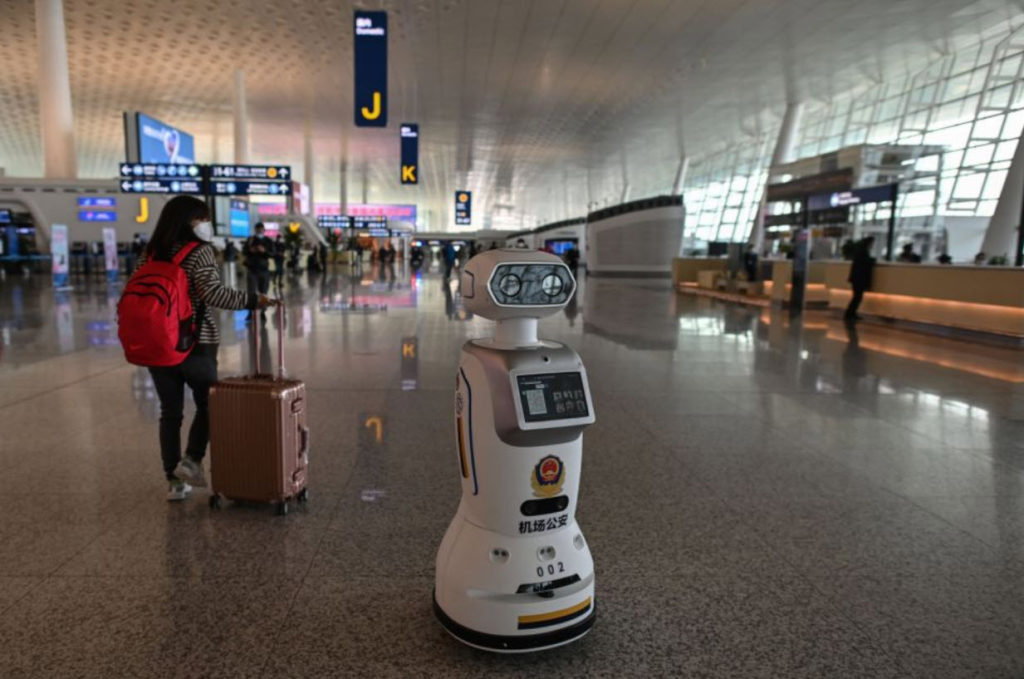

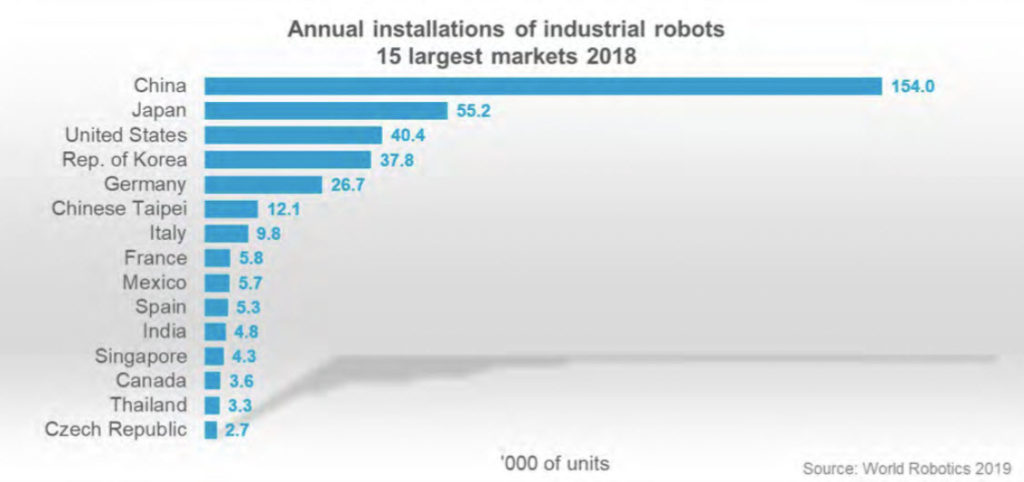
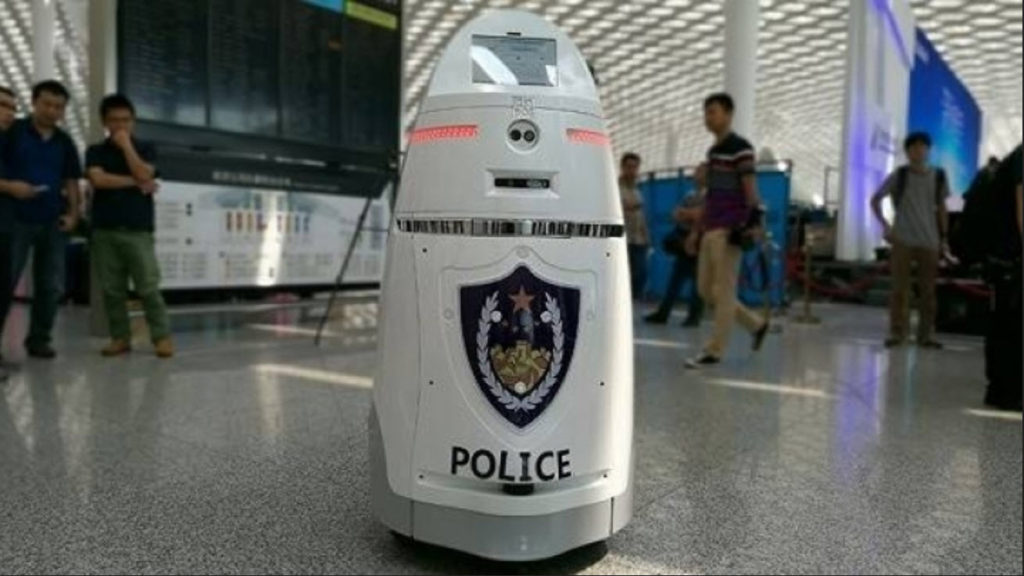
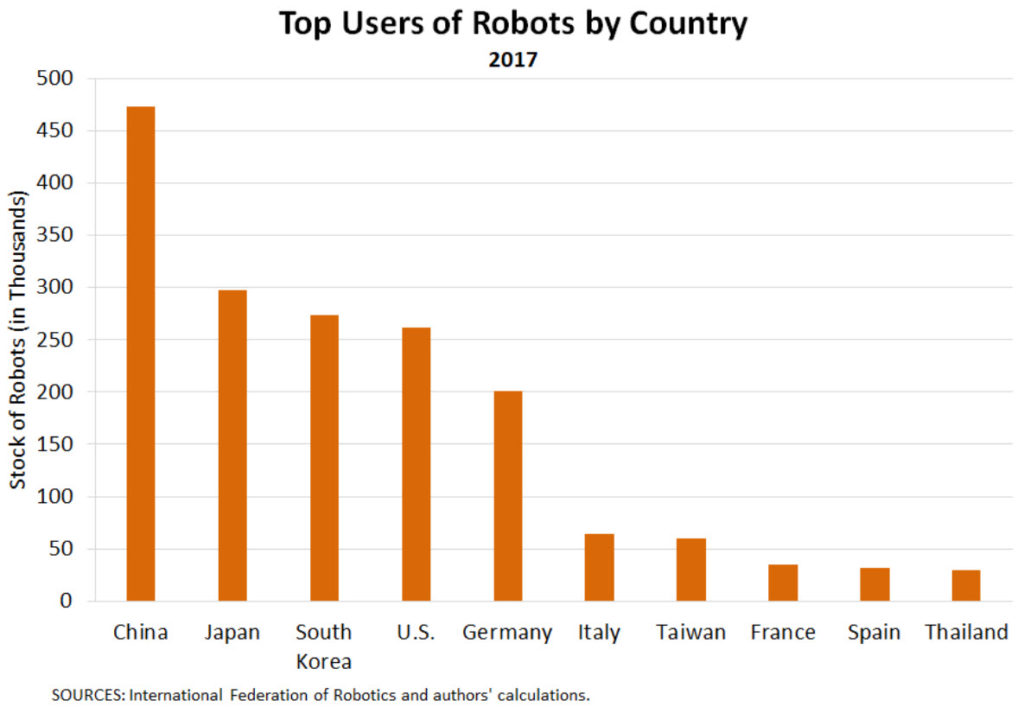
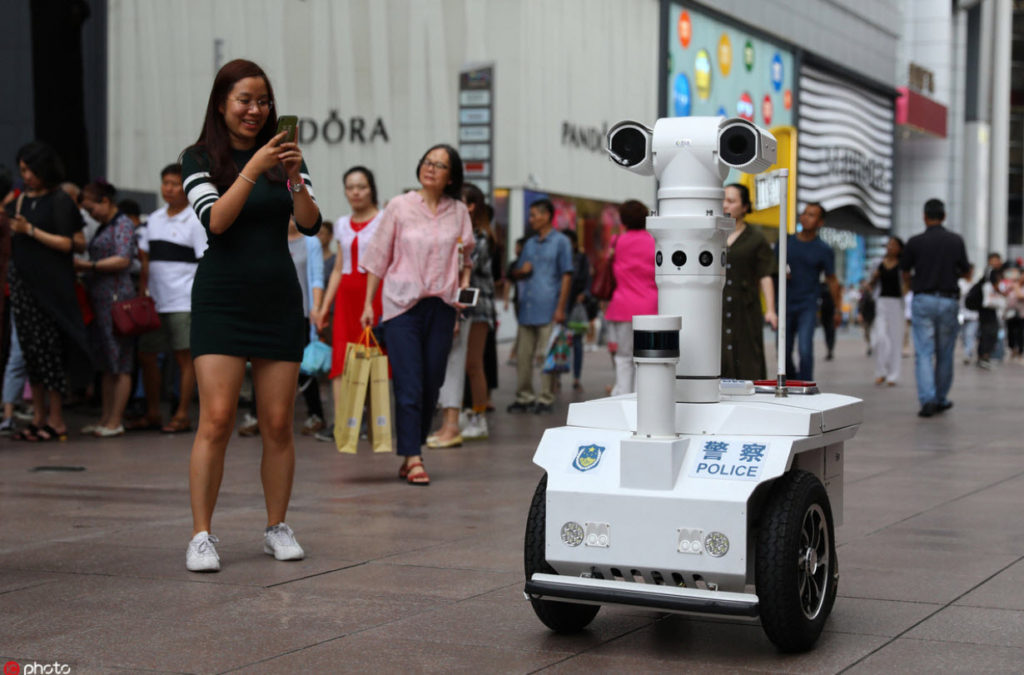


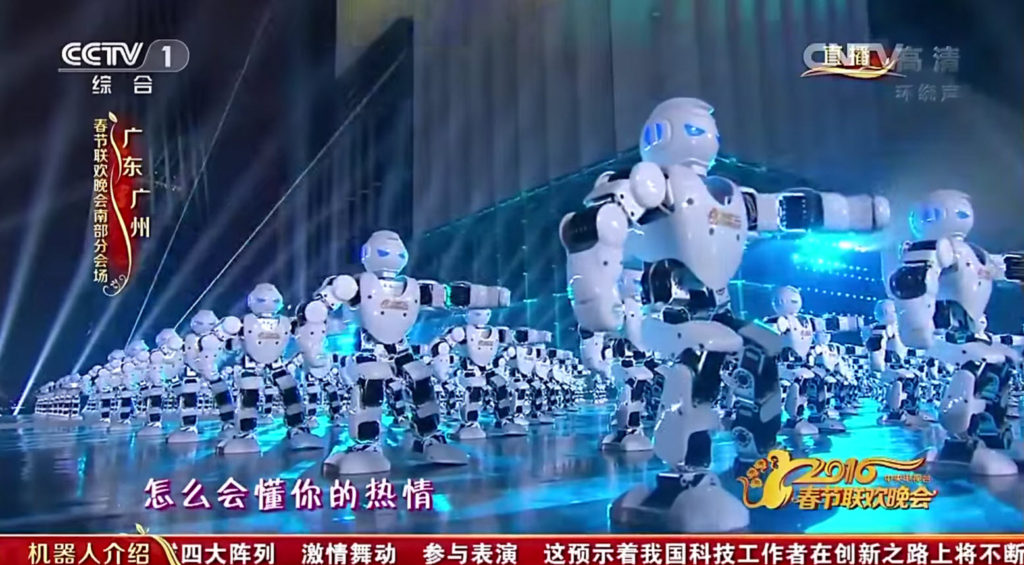


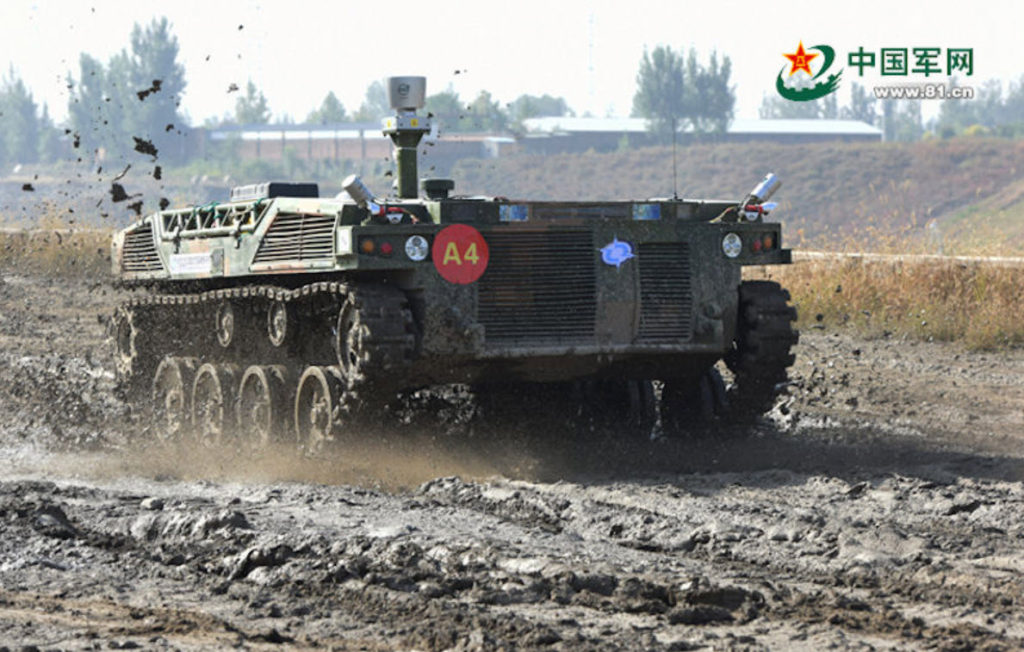
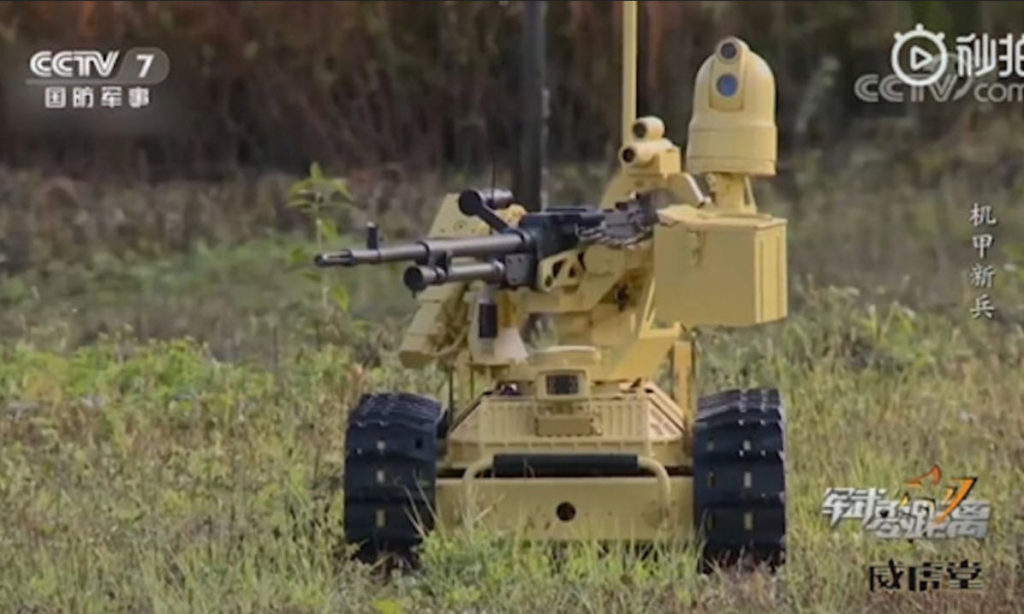

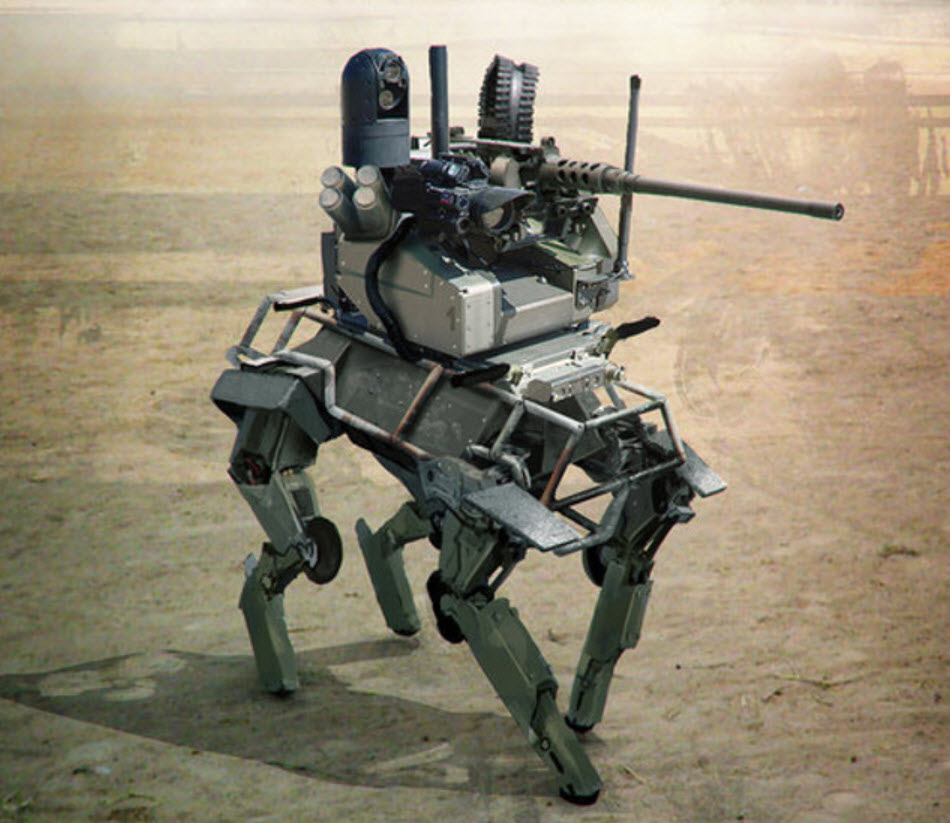 First displayed as a prototype in air shows in 2014 and 2018, the operational Sharp Claw I has been fitted with numerous upgrades designed to improve its reconnaissance and killing abilities. These include an improved short-range electro-optical payload, machine vision, lighting suite and a refined magazine box and ammunition feed mechanism.
The Sharp Claw 1 can walk autonomously, or it can be carried in the cabin of a larger "pointed claw 2" transport unmanned combat vehicle. When marching, they will be transported by the "Jianclaw" 2, and when they reach the combat area, they will march down from the back panel placed behind the cab of the Jianclaw 2 wheeled unmanned combat vehicle for combat. Four years later, at the Zhuhai Air Show in 2018, North Company once again demonstrated an upgraded version of the "Jianclaw" 1 unmanned fighter. The new version has many upgrades, including improved short-range photoelectric loads, machine vision and lighting components, and a newly designed remote weapon station. The weapon station uses ammunition boxes to load ammunition, which can improve the continuous firing ability of unmanned combat vehicles.
First displayed as a prototype in air shows in 2014 and 2018, the operational Sharp Claw I has been fitted with numerous upgrades designed to improve its reconnaissance and killing abilities. These include an improved short-range electro-optical payload, machine vision, lighting suite and a refined magazine box and ammunition feed mechanism.
The Sharp Claw 1 can walk autonomously, or it can be carried in the cabin of a larger "pointed claw 2" transport unmanned combat vehicle. When marching, they will be transported by the "Jianclaw" 2, and when they reach the combat area, they will march down from the back panel placed behind the cab of the Jianclaw 2 wheeled unmanned combat vehicle for combat. Four years later, at the Zhuhai Air Show in 2018, North Company once again demonstrated an upgraded version of the "Jianclaw" 1 unmanned fighter. The new version has many upgrades, including improved short-range photoelectric loads, machine vision and lighting components, and a newly designed remote weapon station. The weapon station uses ammunition boxes to load ammunition, which can improve the continuous firing ability of unmanned combat vehicles. Unmanned ground systems (UGVs) are a priority in China’s defense plans, but their deployment appeared limited. UGVs encompass numerous vehicles that operate on land with a human operator or autonomously. They can execute military missions including combat, ordnance disposal, and transport. Numerous Chinese civilian and defense companies, universities, and research institutes are developing UGVs and other unmanned ground systems. R&D on intelligent guidance for unmanned ground platforms is reported to receive support from China’s 973 and 863 programs for high-technology development, as well as the Twelfth FYP of the General Armament Department (GAD).
Unmanned ground systems (UGVs) are a priority in China’s defense plans, but their deployment appeared limited. UGVs encompass numerous vehicles that operate on land with a human operator or autonomously. They can execute military missions including combat, ordnance disposal, and transport. Numerous Chinese civilian and defense companies, universities, and research institutes are developing UGVs and other unmanned ground systems. R&D on intelligent guidance for unmanned ground platforms is reported to receive support from China’s 973 and 863 programs for high-technology development, as well as the Twelfth FYP of the General Armament Department (GAD).